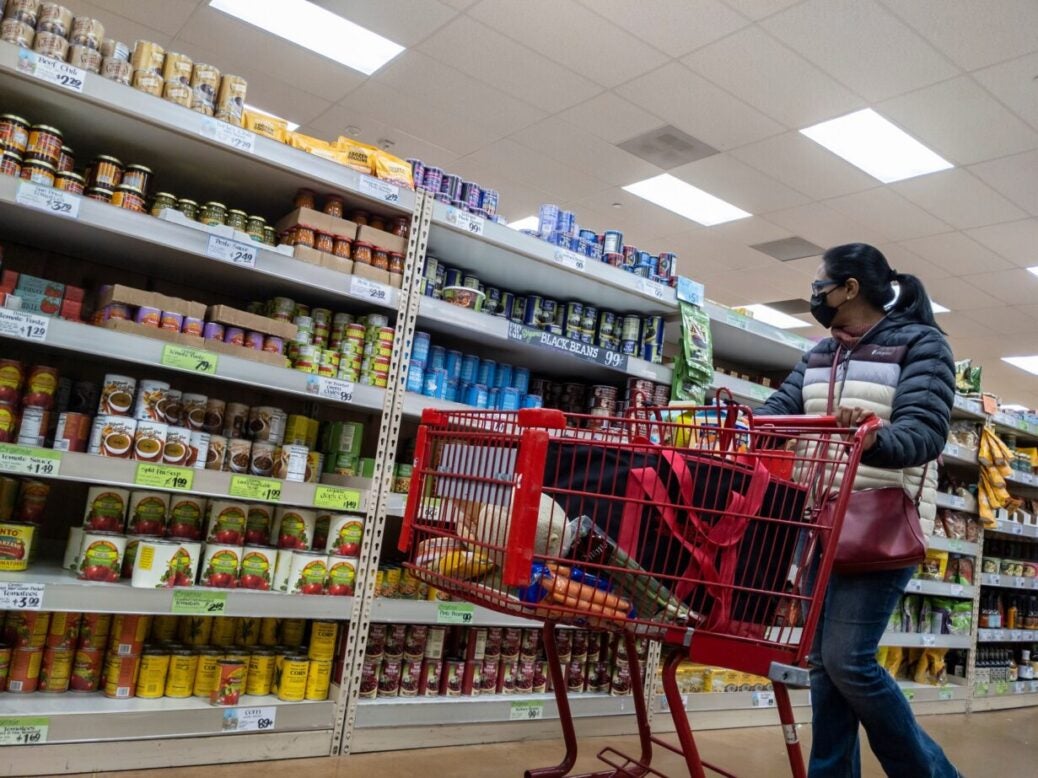How to improve trust between CPG companies and retailers

The Covid-19 pandemic, supply chain disruptions, and the highest food inflation in over four decades have changed many aspects of the sales and marketing relationship between CPG manufacturers and retailers in the United States, often for the worse. But things can improve.
This new reality, which has resulted in more change in less than three short years than in the last decade or more, has created complications that brands and retailers alike are looking for answers to. It is also the strained relationship and – to a certain extent – trust between the two partner industries.
CPG companies have two main stakeholders: consumers and retailers. Regarding the latter, keep in mind that over 90% of all CPG branded products are still sold inside retail store walls in the US. The remaining percentage is sold through direct-to-consumer and online marketplace channels.
Some people might cringe at the claim that CPG brands need to convince retailers. But it is a reality and just as (or almost as) important as consumer persuasion.
How can manufacturers and brands do that in this new reality?
The mystery of the price increase
Nothing has strained the relationship between brand/manufacturer and retailer more in recent quarters than frequent price increases.
Grocery retailers, especially the large, publicly traded companies, are under a lot of pressure. Amid an increasing strain on household finances, there are lower average basket purchases per shopping trip due to ever increasing retail prices.
But CPG companies are also under pressure from the ever-increasing costs of ingredients, packaging, warehousing, shipping and labor. As a result, brands have often attempted to increase wholesale costs for retailers and distributors over the past year.
In discussions with retail category managers and merchandising managers, their main complaint is that CPG manufacturers, especially the majors, raise prices too often and in many cases announce a new price increase just 30 days after the last increase.
Retailers want manufacturers to try to think ahead when raising prices, as the frequency of changes not only causes administrative problems at the store level, but also has negative psychological effects on shoppers. In many cases, they see the price of items increasing twice (or even three times) in the same month.
Manufacturers must think as far ahead as possible and try to incorporate expected increases in commodity costs into their calls for price increases. In fact, adding 5% to your raise is better than having to come back in 30 or 60 days and make another price increase.
CPG manufacturers and brands also need to consider how often – and potentially unjustified in some cases – price increases drive consumers to private label.
In a study published Sept. 8, investment bank AllianceBernstein reported that “private label market share reached 19.6% over the last 12 weeks in channels measured in the US.” Analysts said that represented an increase of about 85 basis points from a year earlier, noting that brand rivals were fetching “record prices”.
They added: “This is now about 32 basis points above the same period in 2019. In the years leading up to the pandemic, private label consistently took market share from branded companies, but this reversed in 2020 as government stimulus, spending shifts and retailers’ prioritization of branded products took hold through.”
Recent gains in private label in the US are directly attributable to unprecedented price increases by brand suppliers, particularly the large, category-leading brands.
The rise of private label should be a cautionary tale, especially for the majors, that while it would be foolish to squander gross margin, it would be equally foolish to use unwarranted price hikes to bolster numbers. Over the past several months, many major CPG makers have reported tepid quarterly sales and lower year-over-year sales, more than offset by price increases, so overall revenue has increased.
In recent months, some US retailers have shifted away from favoring branded products in terms of shelf placement and off-shelf displays, and instead shifted the focus back to their own respective private labels as consumers increasingly trade down as brands continue to thrive make price increases.
digital retail advertising and retail media
Over the past decade, CPG brands have shifted the majority of their advertising dollars from television and radio to digital, which includes a variety of methods and platforms that are primarily consumer-focused.
However, there is no consensus within the CPG and retailer relationship as to what works best.
Large retailers believe that CPG brands should spend more advertising dollars on the various digital advertising platforms they create, and some CPG companies, like General Mills, have been moving in this direction.
As an example, Jon Nudi, president of General Mills’ North American retail division, recently said that the majority of the company’s advertising spend is now digital and that the majority of its online spend is performance marketing directly linked to sales, including a stronger one Leveraging retailers’ digital advertising networks and programs.
Retailer digital advertising platforms offer real opportunities for CPG brands as brands can leverage retailer data and potentially better target their ads for improved sales performance.
The second advantage of these platforms is that they offer a way to improve the relationship between consumables and retailers. Manufacturers and grocers have in many respects grown further apart in terms of advertising and promotions over the years as the internet offers brands to advertise directly to consumers. The downside is that it’s difficult to accurately target a brand’s desired consumer segments, which is what retailer platforms promise due to the potential power of the data grocers hold.
We are seeing an increasing movement from CPG producers to retailer digital ad platforms. Brands should allocate a larger portion of their total advertising spend to these programs. They have to work, of course – that’s why testing and evaluation is essential – but the results so far, such as the General Mills example, show that these networks can be a very valuable tool for brands, particularly in the ability to link advertising to sales performance.
Retailers are also creating more retail digital media platforms, which CPG brands should devote some of their marketing funds to. Trade media can also be performance marketing based. It enables brands to reach consumers at the crucial point of sale, the store, where the majority of consumers still make their purchasing decisions.
Retailers are expanding both digital advertising and retail media. CPG brands need to be a stronger partner in this process. Both offer excellent performance-based marketing and advertising propositions for brands and retailers, while also serving as a way to enhance the CPG retail relationship.
What to do with direct-to-consumer?
Direct-to-consumer (D2C) was not a major concern in the CPG and retail relationship until the pandemic shutdown, leading to a massive surge in online orders, including direct from CPG companies.
Faced with this surge, mostly from smaller brands discovering D2C, well before most big CPG companies decided it was worth the effort, big brands jumped in headfirst, launching their own online platforms and providing a small percentage of theirs Marketing tools ready for digital D2C advertising.
This phenomenon has caught the attention of retailers and is increasingly straining the relationship between consumer products and retail. This shouldn’t come as a surprise, given that retail has long been the go-between to the consumer when it comes to groceries. They understand D2C but also see it, particularly as it relates to the category-leading big brands, as a kind of end-around for them, the curators of CPG and agents for consumers about their businesses.
However, the reality is that D2C accounts for at most 4-5% of total CPG sales volume, and the bulk of that percentage goes to early-stage and emerging CPG brands that have built strong franchises that sell directly to the consumers go. Most of these brands are now adding physical retail as a channel, recognizing that it is a must to take their respective brands to the next level of sales.
CPG brands can leverage their D2C data to improve relationships with retailers. For example, last year I compiled D2C sales data for a US brand in a specific region and used that data as part of a presentation to show a retail category manager how popular the brand is, including the all-important repeat sales metric Region where its stores are located. This helped gain in-store placement for the brand, and the category manager told me it was the first time a brand had shared their D2C sales with him.
Trade must also accept D2C and be open to this data exchange. D2C is a great marketing tool for a brand as well as a distribution channel and its applicability to improve the CPG and retail relationship has great potential. We need more formalization and integration of D2C data throughout the sales and marketing process and shouldn’t feel like we can’t share this with retailers. It benefits both parties in the relationship and as part of the overall mix can result in better sales performance.
The pandemic, supply chain collapse and food inflation have all resulted in significant changes in the relationship between CPG and retail.
The three areas I’m focusing on are far from the only areas that require attention, but if CPG brands target their efforts here, they will see a significant improvement in their relationship with retailers and even be on the way to to win her over.
Just Food columnist Victor Martino is a California-based strategic marketing and business development consultant, analyst, entrepreneur and author specializing in the food and grocery industry. He is available for advice at: [email protected] and https://twitter.com/VictorMartino01. You can read more of his columns for Just Food here.


